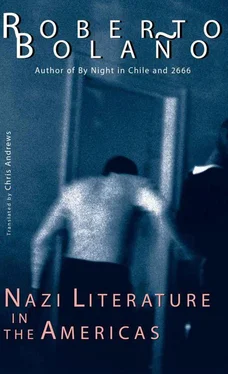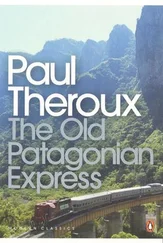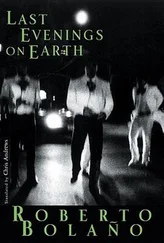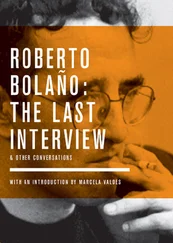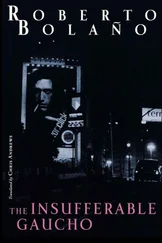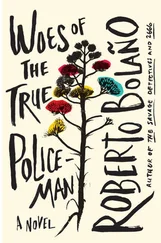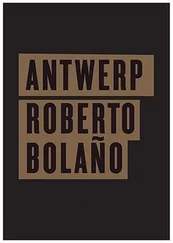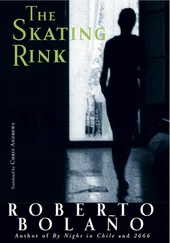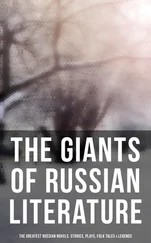In 1942, Mexico declared war on the Axis powers, and although the decision struck Irma Carrasco as a blunder, or at best a ridiculous joke, she was, above all, a Mexican, so she decided to return to Spain and await further developments.
In 1946, the day after the première of her play The Moon in her Eyes , which was greeted with discreet enthusiasm by the critics and the public, there was a knock at the door of her simple but comfortable apartment in Lavapiés. It was Barreda, reappearing on the scene.
The architect, who was living in New York, had come to make a new start. On his knees, he begged forgiveness, and made all the promises and oaths that Irma was longing to hear. The embers of their first love were rekindled. Irma’s tender heart did the rest.
They returned to America. Barreda had, indeed, changed. During the voyage he was tirelessly attentive and affectionate. The ship on which they had embarked in Europe took them to New York. Barreda’s apartment on Third Avenue had been specially prepared for Irma’s arrival. Their second honeymoon lasted three months. In New York, Irma experienced moments of great happiness. They decided to have children as soon as possible, but Irma did not get pregnant.
In 1947, the couple returned to Mexico. Barreda took up with his old friends, seeing them every day. Those friends or the air of Mexico City transformed him: he reverted to his former self, the fearsome husband of the bad old days. His behavior became erratic; he started drinking again and seeing chorus girls; he stopped listening and talking to his wife. Soon the verbal abuse began, and one night, after Irma, in conversation with some friends, had defended the honor of Franco’s regime and praised its achievements, Barreda hit her.
The initial relapse into conjugal violence was immediately followed by a rash of similar incidents, occurring almost daily. But Irma was writing and that was what saved her. In spite of beatings, insults and humiliations of all sorts, she persisted in her work, holed up in a room of her house in Coyoacán, while Barreda succumbed to alcohol and the Mexican Communist Party’s endless internal debates. In 1948, Irma finished Juan Diego , a strange and subtle play in which the Indian who saw the Virgin of Guadalupe and his guardian angel make their way through Purgatory, on what seems to be an eternal journey, since Purgatory itself, the author seems to be suggesting, is eternal. After the premiere Salvador Novo came backstage to congratulate Irma. He kissed her hand and they exchanged elaborate compliments. Meanwhile Barreda, who was talking or pretending to talk with some friends, watched her every move. He seemed increasingly nervous. Irma was taking on gigantic proportions in his eyes. He began to stutter and sweat profusely. In the end he completely lost control of the situation: shoving his way across the room, he insulted Novo and slapped Irma repeatedly, to the astonishment of the onlookers, who might have been quicker to separate husband and wife.
Three days later, Barreda was arrested, along with half of the Communist Party’s Central Committee. Once again, Irma was free.
But she did not abandon Barreda. She visited him, took him books on architecture and detective novels, made sure that he was eating properly, had endless discussions with his lawyer, and looked after the running of his business. In Lecumberri, where he spent six months, Barreda quarreled with the other Communist prisoners, who found out for themselves just how hard it could be to share a confined space for a long time with a man of his temperament. He narrowly escaped summary justice at the hands of his comrades. On his release from prison, he quit the Party, publicly abjured his former activism, and left for New York with Irma. Everything seemed to bode well: they would begin a new life, once again. Irma was confident that, away from Mexico, their marriage would recover its former happiness and harmony. It was not to be: Barreda was embittered and he took it out on Irma. Life in New York, where they had known such joy, became hellish, and one morning Irma decided to leave it all behind. She took the first bus she could find, and three days later she was back in Mexico.
They would not see each other again until 1952. In the meantime, Irma had two new plays staged, Carlotta, Empress of Mexico and The Miracle of Peralvillo , both of which dealt with religious themes. She also published her first novel, Vulture Hill , a recreation of the last days in the life of her only brother. The book divided the critics in Mexico. According to some, Irma’s message was that the only way to save the country from impending disaster was simply to turn the clock back to 1899. For others, Vulture Hill was an apocalyptic novel prefiguring the disasters awaiting the nation, which no one could forestall or counteract. The Vulture Hill of the title, where her brother, Father Joaquín María (whose reflections and memories occupy the greater part of the text), was executed, represents the future geography of Mexico: barren, desolate, a perfect scene for further crimes. The firing squad’s commanding officer, Captain Álvarez, represents the PRI, the governing party steering the nation towards disaster. The soldiers of the firing squad are the misguided, dechristianized Mexican people, imperturbably attending their own funeral. A journalist from a Mexico City newspaper represents the country’s intellectuals: hollow, faithless individuals, interested only in money. The old priest, disguised as a farmer, watching the execution from a distance, exemplifies the attitude of Mother Church, exhausted and terrified by the violence of mankind. The Greek traveling salesman, Yorgos Karantonis, who learns of the execution in the village and climbs the hill out of curiosity, simply to kill time, is the incarnation of hope: Karantonis falls to his knees weeping as Father Joaquín María is riddled with bullets. And, finally, the children who are playing on the other side of the hill, facing away from the execution, throwing stones at each other, represent Mexico’s future: civil war and ignorance.
“The only political system in which I have complete confidence,” she told an interviewer from the women’s magazine Housework , “is theocracy, although Generalísimo Franco is doing a pretty good job too.”
The literati of Mexico, almost without exception, turned their backs on her.
In 1953, after another reconciliation with Barreda, who had become a renowned architect, the couple traveled to the Orient: Hawaii, Japan, the Philippines and India inspired Irma to write the new poems of The Virgin of Asia , steely sonnets fearlessly probing the open wound of modernity. The solution, it now seemed to her, was to return to sixteenth-century Spain.
In 1955 she was hospitalized with various broken bones and extensive bruising.
Barreda, now a self-declared libertarian, had reached the height of his fame: his reputation as an architect was international and commissions from all over the world came flooding into his firm. Irma, by contrast, gave up writing plays and dedicated herself to her house, the social life she led with her husband, and the painstaking construction of a poetic work that would only come to light after her death. In 1960 Barreda tried to divorce her for the first time. Irma refused, using all the resources at her disposal. A year later Barreda walked away from the marriage, leaving the matter in the hands of his lawyers, who put pressure on Irma, threatening to cut off the money and create a public scandal, appealing to her common sense, and her good heart (the woman with whom Barreda was living in Los Angeles was about to have a child), but to no avail.
In 1963, Barreda visited her for the last time. Irma was ill, and it is not entirely unreasonable to suppose that the architect was moved by pity, or curiosity, or some such sentiment.
Читать дальше
